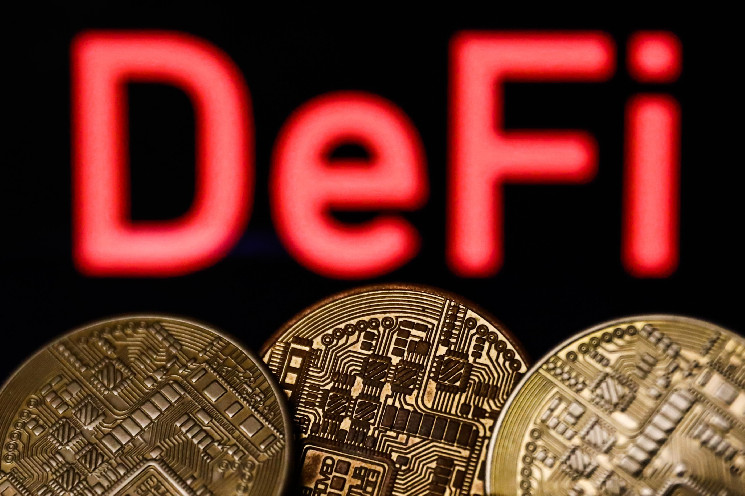As the crypto market enters a new phase of bullish momentum, the question on everyone’s mind is whether Decentralized Finance (DeFi) will take center stage again. While the DeFi boom of 2020 catalyzed the broader blockchain ecosystem, this cycle could take a more evolved and measured approach, focusing on long-term utility and sustainability.
Why DeFi is more important than ever
DeFi has transcended its experimental origins and become a cornerstone of blockchain innovation. Using smart contracts and decentralized infrastructure, it has democratized access to financial services for millions of people around the world.
DeFi is no longer a marginal experiment, but a proven disruptor. In 2021, an estimated 1.4 billion people were unbanked, and another billion were unbanked. DeFi provided a path to financial inclusion, allowing users to bypass traditional gatekeepers. Today, stablecoins anchor the market, and DeFi lending platforms, decentralized exchanges (DEXs), and staking protocols have forever changed the way capital flows.
The current bull run
To evaluate the possibility of a DeFi cycle, we need to examine current market dynamics. The ongoing bull run has led to a revival in the prices of Bitcoin and large-cap assets, with a total market capitalization of over $3 trillion USD. However, DeFi growth depends on more than just market optimism.
Key indicators to keep an eye on
- Market liquidity: An increase in DeFi Total Value Locked (TVL) across platforms indicates increased user confidence. Recent data shows a steady increase in TVL, which now exceeds $75 billion USD.
- Institutional importance: Institutional players, such as BlackRock and Goldman Sachs, are exploring DeFi infrastructure, signaling mainstream adoption.
- User growth: Wallet activity in DeFi protocols is up 30% quarter-over-quarter, indicating growing user participation.
The DeFi disruptors
The rise of DeFi TVL has brought several new innovative solutions to the market. One of the emerging players shaping this next phase is Nudge, a Berlin-based company introducing a new primitive to the DeFi ecosystem: programmable incentive payments called “nudges.”
According to Markus Maier, co-founder of Nudge: “Nudges are programmable incentive payments that allow protocols to pay users for reallocating assets, liquidity or activities in the chain. Think of it as getting paid – or being ‘pushed’ – to transfer your assets, move to a staking provider or adopt a new Layer 2 solution.”
Nudge’s approach, also called “reallocation primitives,” represents a shift in the way funds are used on the DeFi platforms. Users can earn rewards for reallocating their assets, while protocols gain measurable and scalable tools for user acquisition and retention. This concept goes beyond traditional token rewards and provides a more targeted and efficient mechanism for ecosystem growth.
“The inspiration behind nudges,” Maier adds, “was the crowded landscape of protocols competing for the same group of users and capital. By enabling users to monetize by reallocating their resources, we create new incentives that align their actions with the success of the broader ecosystem.”
Other emerging players include Convex Finance and Tokemak. Convex Finance, built on top of Curve Finance, improves return opportunities for liquidity providers and Curve stakers by streamlining rewards and boosting incentives. Tokemak, on the other hand, acts as a decentralized liquidity provider, optimizing capital deployment across the ecosystem with its unique liquidity reactors.
While retail-focused DeFi solutions like Nudge aim to make financial instruments more accessible to individual users, there is another category of DeFi applications that focuses on institutional utilities, bridging the gap between traditional financial and decentralized systems. For example, Singapore-based Project Guardian is exploring institutional DeFi by experimenting with tokenized bonds and deposits to assess the potential of decentralized financial infrastructures. Backed by the Monetary Authority of Singapore (MAS), it aims to integrate tokenized assets with authorized liquidity pools, providing a secure and scalable blueprint for institutional adoption.
The role of regulation
One of the critical factors influencing the future of DeFi is regulation. As governments around the world grapple with the challenges of overseeing decentralized systems, the impact of new policies on DeFi cannot be overstated. Regulatory clarity could push DeFi into the mainstream or stifle its growth.
Recent developments indicate a mixed picture for the sector. The European Union’s Markets in Crypto-Assets (MiCA) regulation aims to create a comprehensive framework for crypto assets, including DeFi protocols. While this provides a path to legitimacy, critics argue that overly strict requirements can hinder innovation.
In the United States, the Securities and Exchange Commission (SEC) has increased its oversight of DeFi platforms, emphasizing the need for compliance with existing securities laws. This has led many projects to consider decentralized autonomous organizational structures (DAO) to get through regulatory hurdles. “While regulation is necessary, it must be balanced to promote innovation,” says Maier.
For a more in-depth look at regulatory considerations, I recommend reading the Key Elements of an Effective DeFi Framework published by the Crypto Council of Innovation, which I co-authored. Here we have outlined the principles for creating policies that encourage innovation while ensuring consumer protection and financial stability.
What could cause this DeFi cycle?
Several factors could reignite a DeFi cycle in this bull run:
- Institutional importance: As traditional financial institutions explore blockchain technology, DeFi could serve as a bridge between centralized and decentralized systems.
- Layer 2 scaling solutions: Emerging players in the space are making DeFi more accessible and cost-effective, potentially driving user adoption.
- Tokenization of real-world assets: The integration of real-world assets into DeFi platforms could attract a broader audience and increase usability.
“The next DeFi cycle will prioritize utility over hype,” Maier added.
Conclusion
While regulatory uncertainties and market sentiment persist, the fundamentals of DeFi remain strong. With innovative platforms like Nudge leading the way and the continued advancements in blockchain technology, the stage is set for a potential resurgence of DeFi in this bull run. The coming months will be crucial in determining whether DeFi can overcome its challenges and regain its position as a driving force in the crypto ecosystem.


